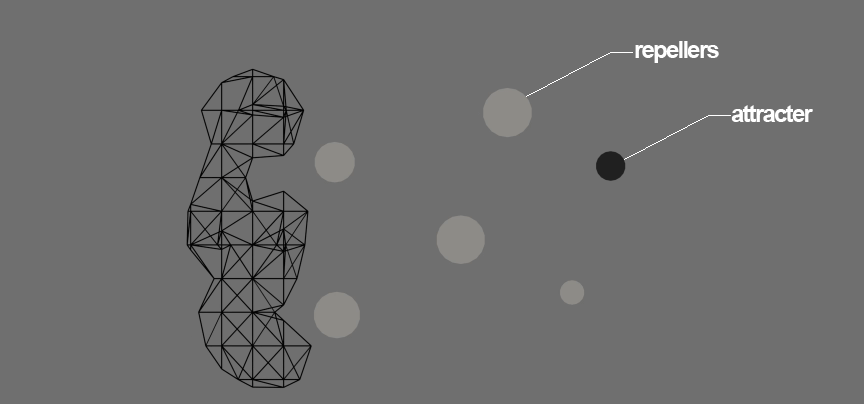Self Adapting Geometry
Posted on 13 April 2013

Good games are designed to allow the player to learn the game by controlling the task and level of difficulty within the early moments of play. This allows the player to begin to construct their own knowledge of how to go about playing.
We usually think of design as an activity that involves eye, hand, and some material. The thinking process of which shape grammarians call “Visaul Calculation” is carried out by the designer using a set of tools to manipulate some material resulting in a representation of an idea. This might come in the form of a sketch, a model, or a variation of the two in physical or digital form. This exploration takes on a different approach to design. In modeling with AI agents and self-adapting geometries the designer takes on the role of a programmer whose main objective is to set the rules and constraints for a composition to occur. By assigning attributes to various agents that have the ability to attract, repel, wander, follow paths, and fuse together the designer has given “artificial life” to shapes and proceeds to watch them play. The process requires a constant manipulation of the tool and set of rules rather than the actual composition. The result is a series of emergent designs animated over time.
"On a micro scale we can begin to play with shapes like ants in a jar."
The Process
This exploration used the scripting language MaxScript embedded in Autodesk’s 3DS Max modeling software. The script requires a given geometry particle to have the ability to respond to other particles and its environment.
In the environment we place attractor nodes and reflective nodes and watch the particles swim around in the space. As the particles come within close proximity to each other they attract fuse together like water droplets. The result of the process is a cell like shape that is constantly trying to find its equilibrium.
